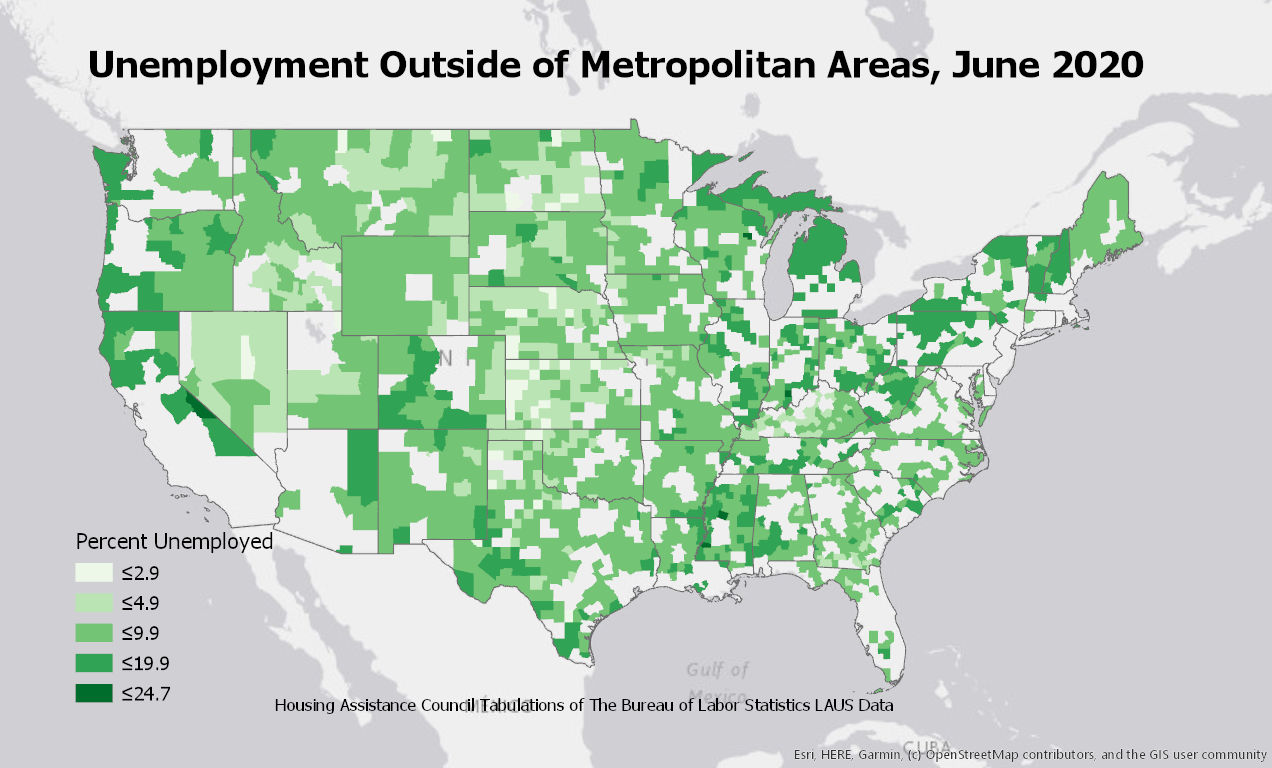Rural Unemployment Rate Declines, but 1.8 Million Rural Workers Still Unemployed

To access an interactive version of this map visit: https://arcg.is/Ov8bq
The most recent data from the Bureau of Labor Statistics indicates that rural labor markets have rebounded somewhat from astronomical unemployment rates earlier this spring. Yet, over 1.8 million rural workers are still unemployed – many as a result of the economic fallout from the COVID-19 health crisis. The June jobs numbers revealed a seasonally unadjusted unemployment rate of 8.8 percent for counties outside of metropolitan areas, down from the revised rural unemployment rate for May of 11.3 percent. The number of rural jobless fell from 2.2 million in May to an estimated 1.8 million for the month of June. At its peak in April, the BLS estimated approximately 2.8 million rural jobless with an unemployment rate of 13.6 percent in rural America.
While the rebound in the number of rural workers to just over 19 million is a positive development, there are still substantial concerns in rural labor markets as the nation still grapples with the COVID 19 health crisis. The rural unemployment rate is still nearly double the rate for February 2020 prior to the COVID crisis. Furthermore, the June job numbers do not reflect potential economic backsliding from the dramatic rise in COVID 19 cases over the summer. In the month of July there were almost as many new reported rural cases of COVID-19 than had been reported for the prior 5 months in total.
POTENTIAL UNEMPLOYMENT RAMIFICATIONS FOR RURAL HOUSING
Jobs and employment conditions have traditionally been a bellwether and leading indicator for housing trends. While the unemployment caused by COVID-19 is unprecedented and unpredictable, the continued high jobless rates signal the potential for serious concerns across the housing spectrum. Many Americans have been buoyed by large scale federal unemployment benefits and economic stimulus which largely came to an abrupt end in August and has yet to be clearly reestablished. If rural unemployment rates continue at these elevated levels, the collateral impacts to almost all sectors of the housing market could be substantial – notably the ability of unemployed households to make rent and mortgage payments.
About the Data: Information for this Brief derives from HAC tabulations of data from the Bureau of Labor Statistics’ Local Area Unemployment Statistics (LAUS) reporting. https://www.bls.gov/lau/ In this Brief the terms “Outside Metropolitan Area” and “Rural” are used synonymously and refer to counties and population outside of the Office of Management and Budget (OMB) designated Metropolitan Areas. https://www.whitehouse.gov/wp-content/uploads/2018/09/Bulletin-18-04.pdf



